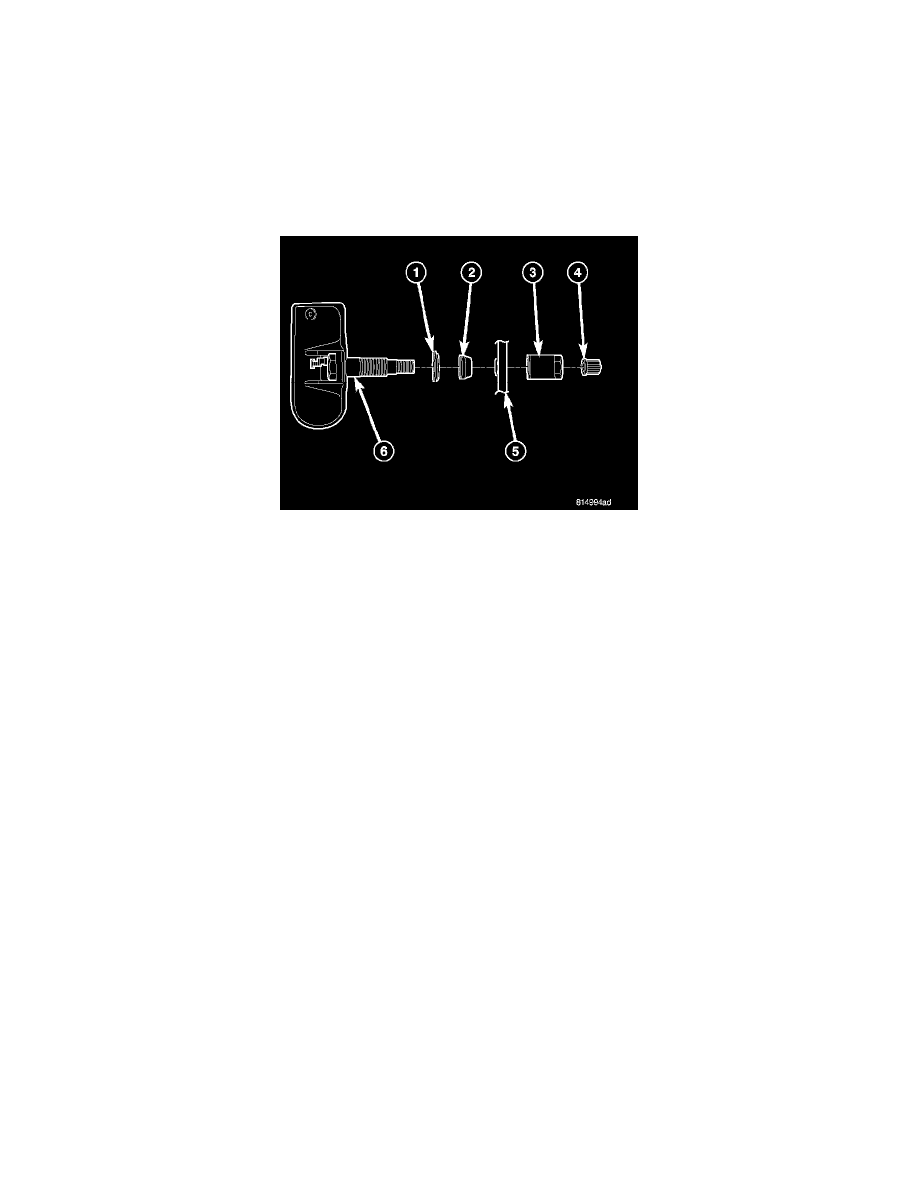Magnum SRT-8 V8-6.1L VIN 3 (2006)

the body.
CAUTION: Although 315 MHz and 434 MHz sensors are identical in size and shape, they are not interchangeable. Always make sure the correct
sensor is being used.
NOTE: Once mounted inside a tire and wheel assembly you are not able to visually tell the difference between a 315 MHz and 434 MHz sensor. The
tire must be dismounted allowing visual inspection of the sensor body.
The TPM sensors are designed for original style factory wheels. Do not attempt to install a tire pressure sensor in an aftermarket wheel. If aftermarket
wheels are installed and do not contain tire pressure sensors, the system will not function properly and the driver will be continuously notified of a
system malfunction.
The serviceable components of the tire pressure sensor are :
^
Sensor-To-Wheel Seal (2) and Metal Washer (1)
^
Valve Stem Cap (4)
^
Valve Stem Core
^
Valve Stem Nut (with pressed-in washer) (3)
The valve stem caps and cores used are specifically designed for the tire pressure monitoring sensors. Although similar to standard valve stem caps
and cores, they are different. The valve stem cap has a special seal inside to keep moisture and corrosion out. The valve stem core has a special nickel
coating to protect from corrosion.
OPERATION
The battery operated tire pressure sensors lay dormant (Park Mode), then wake and start transmitting (Drive Mode) when the vehicle first reaches
speeds over 15 mph (24 km/h). Once the wheels stop rotating for a period of approximately 20 minutes, the sensors shut down until again awaken.
Although not transmitting as when in Drive Mode, while in Park Mode, the sensors still transmit approximately once every 13 hours to let the receiver
know air pressure status at that time. Sensors will also transmit when a pressure change of one psi (seven kPa) or more is detected during that period.
Using an RF signal, each sensor transmits tire pressure data approximately once every minute. Each sensor's (transmitter) broadcast is uniquely coded
so that the Wireless Control Module (WCM), commonly referred to as the Sentry Key Remote Entry Module (SKREEM), can monitor the state of
each of the sensors in the four rotating road wheels. The WCM automatically learns and stores the sensor's ID while driving after a sensor has been
replaced. This can take up to 10 minutes while driving at speeds above 15 mph (24 km/h). There is no formal retraining procedure necessary.
For additional information, refer to appropriate diagnostic information.
CAUTION
CAUTION: The use of tire sealants is strictly prohibited for vehicles equipped with the Tire Pressure Monitoring system. Tire sealants can clog tire
pressure sensors.
CAUTION: Tire pressure sensor valve stem caps and cores are specially designed for the sensors. Due to risk of corrosion, do not use a standard
valve stem cap or core in a tire pressure sensor in place of the original equipment style sensor cap and core.
CAUTION: Do not attempt to install a tire pressure sensor in an aftermarket wheel. Use tire pressure sensors in original style factory wheels only. If
aftermarket wheels are installed, and therefore do not contain tire pressure sensors, the system will not function properly and the driver will be
continuously notified of a system malfunction.
CAUTION: Any time a sensor is to be installed in a wheel, a new seal and washer must be installed on the stem to ensure air tight sealing.
